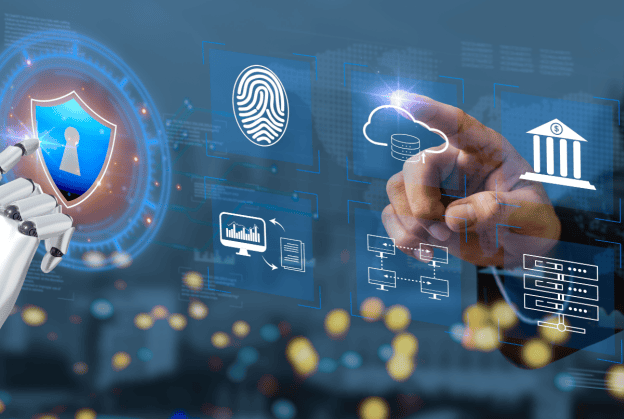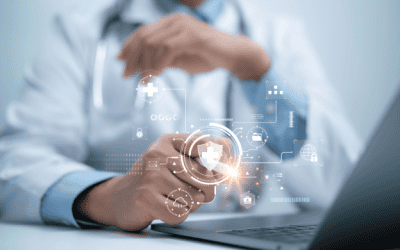The digital transformation of businesses, coupled with the increasing interconnectedness of IoT devices and reliance on digital data storage, has significantly heightened vulnerabilities to cyber threats. Industries that manage and store sensitive data are finding themselves at a crossroads where securing their digital assets is no longer optional but critical for maintaining operational integrity and trust. Recent statistics underscore the pressing need for enhanced cybersecurity measures: a staggering 72% of organizations reported experiencing cyber threats in the past year. This rising trend points to a larger pattern of increasing cyberattacks as cybercriminals become more sophisticated in exploiting vulnerabilities. As we delve into the specific cybersecurity challenges faced by various critical sectors, it becomes evident that each industry requires strong strategies to effectively mitigate risks. This exploration not only highlights the unique vulnerabilities of each sector but also showcases the essential cybersecurity measures necessary to protect sensitive information and maintain trust in an increasingly digital world.
1. Financial Services Industry:
The financial services sector, constantly in the crosshairs of cybercriminals, processes high volumes of sensitive customer data daily. This sector encompasses a wide range of institutions including banks, investment firms, and insurance companies, each holding vast amounts of financial data which, if compromised, could lead to severe financial losses. The nature of these transactions and the value of the data managed make this sector a prime target for sophisticated cyber threats such as Advanced Persistent Threats (APTs), ransomware, and phishing attacks. In addition to securing data from cybercriminals, financial institutions also face stringent regulatory requirements worldwide, like GDPR in Europe and GLBA in the United States, which mandate comprehensive data protection measures to ensure consumer privacy and data security. Financial entities primarily contend with phishing and malware attacks aimed at accessing secure data and financial systems for fraudulent purposes. The sophistication of these threats often requires equally sophisticated defenses. Implementing strong encryption for data both at rest and in transit is essential, as is the utilization of advanced threat detection systems that monitor network activity and alert to anomalies in real time. This approach not only protects against current threats but also prepares these institutions to adapt quickly to new risks as they emerge, ensuring resilience in a sector where consumer trust is paramount.
2. Healthcare Industry:
The healthcare industry holds a critical responsibility in managing vast amounts of personal and medical information, which makes it a prime target for cybercriminals. Hospitals, clinics, insurance companies, and other healthcare providers deal with extremely sensitive data such as patient health records, insurance information, and payment details that, if exposed, could lead to severe privacy violations and fraud. The potential for identity theft and blackmail makes the protection of this data not just a technical necessity, but a moral obligation. Furthermore, the healthcare sector faces unique challenges due to the widespread use of electronic health records (EHRs) and medical devices connected to the Internet, expanding the attack surface for potential cyber threats. This interconnectedness requires robust cybersecurity measures that go beyond basic protections to ensure the confidentiality, integrity, and availability of patient data. To combat the risks of data breaches, ransomware, and insider threats, healthcare organizations must implement comprehensive cybersecurity strategies that encompass both technological solutions and human factors. Ensuring that all data transfers are secure is crucial, and this can be achieved through the use of encryption technologies that protect data as it moves across networks. Regular updates and patches to software systems are necessary to protect against known vulnerabilities, particularly in medical devices and health IT systems. Additionally, healthcare entities must conduct regular risk assessments and security audits to identify and mitigate potential security gaps. By creating a culture of security awareness and preparedness, healthcare providers can significantly reduce the likelihood of cyber incidents and ensure the ongoing trust of their patients and partners.
3. Government Agencies:
Government agencies are custodians of a nation’s most sensitive information, managing data that spans from personal citizen records to state secrets. This makes them a prime target for cyber espionage and sabotage activities. The threat landscape for government entities is complex and varied, including attacks from cybercriminals, foreign intelligence services, and even insiders. These agencies must handle a vast array of data, from voter databases and social security details to military and diplomatic communications. As digital platforms become more ingrained in government operations, the potential for cyberattacks grows, necessitating the implementation of sophisticated cybersecurity measures. These measures are crucial not only for protecting the integrity of governmental functions but also for securing the trust of the public. Effective cybersecurity in this sector requires a balanced approach that combines technology, regulation, and continuous process improvement. To mitigate these risks, government agencies must deploy a multi-layered security strategy that includes the encryption of sensitive data, rigorous access controls, and the segmentation of networks to contain and limit potential breaches. By prioritizing cybersecurity, government agencies can protect themselves against sophisticated cyberattacks and ensure the continuity of their critical operations.
4. Critical Infrastructure Providers:
Critical infrastructure providers such as those in the energy, water, and transportation sectors, form the backbone of national security and economic stability. These industries operate systems and networks that, if disrupted, could lead to significant societal and economic damage. The critical nature of these services makes them a target for cyberattacks, including state-sponsored attacks and cyber-terrorism. The threat landscape is particularly severe given the potential for attackers to cause widespread disruption by targeting interconnected and often remotely controlled systems. For example, a successful attack on the electrical grid could not only cause immediate disruption to power supply but also have cascading effects on other critical sectors. To protect these vital assets, it is essential that cybersecurity measures are not only robust but also specifically tailored to the operational and environmental challenges unique to each type of infrastructure. Given the high stakes involved, these sectors also benefit from adopting a resilience-focused approach to cybersecurity, which involves preparing to not only prevent attacks but also to respond effectively when incidents occur. This includes having detailed incident response plans and regular drills to ensure readiness. Participation in national and international cybersecurity initiatives can provide valuable insights into emerging threats and best practices. By fortifying their cybersecurity defenses, critical infrastructure providers can ensure the continuity of services that are essential for public safety and economic stability.
As we navigate the complexities of securing digital assets in an interconnected world, the imperative for robust cybersecurity strategies across various sectors becomes increasingly evident. Each industry, from financial services to critical infrastructure, not only confronts unique threats but also holds specific stakes that demand tailor-made security measures. Across all these sectors, the convergence of advanced threat detection technologies, rigorous encryption practices, and continuous security training forms the cornerstone of a proactive cybersecurity approach. By investing in these areas and fostering a culture of security awareness and preparedness, these industries can not only defend against current threats but also adapt swiftly to emerging challenges, ensuring the resilience and reliability of services critical to public safety and economic stability.




